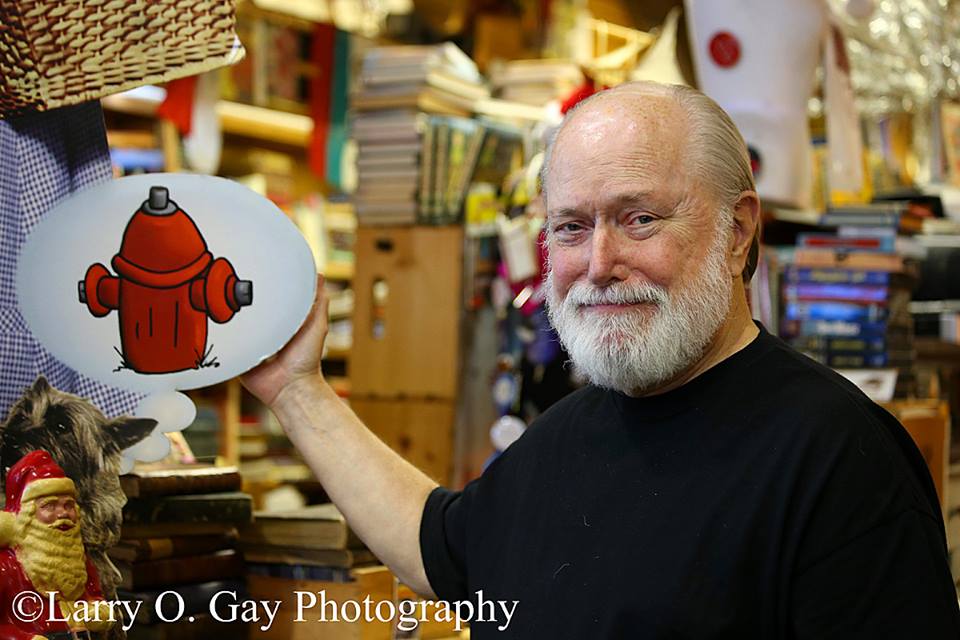Listen to Jim’s podcast: http://redclaydiary.com/mp3/
or read his words:
Television Reverse-Image Interview Exists Therefore It Is
From a long-ago entry in my neverending Red Clay Diary:
So, here I am in a television studio playing the role of Momentarily Interesting Author, so that I can be interviewed so that I can get some free publicity so that maybe somebody will purchase a copy of my latest book.
Everything in a TV studio is one-sided, because reality separates itself from the Show That Must Go On. The cameras and lights and cobwebs and teleprompters and cuecards are all on one side of the room. On the other side is The Show—desks, chairs, heavily-made-up anchors waiting tensely for the commercial to end so that they can re-freeze those smiles that bring in those salaries.
I’m enjoying the spectacle but wondering whether the show would be twice as interesting if the cameras were moved to the Set and turned toward the reality part of the room.
What if the shows were shot vice-versa? Then, you’d see the backs of things: plywood housing Formica surfaces, polished non-carpeted floors nudging up to the frayed carpeting of The Set.
And get this: No living-flesh camera operators! The cameras are being controlled robotically, with no-one shouting orders or telling jokes in the earphones of bored camera operators, like in the early days. No ad-libbing, either.
The show is one extended Cold Read.
The anchors are people who are skilled at reading aloud without stumbling much, people who read well and animatedly without seeming to falter.
I look out the hallway door at mist and fog and green hills beyond the studio.
The reversed cameras would also pick up tiny but fascinating bits of visual material—makeup and mirrors and no-sweat pads resting on chairs, ordinarily out of camera sight.
In real life, the talking heads seem somewhat small and real and vulnerable—not anything like their electronic images. If the camera could capture that, wouldn’t everything we see on TV be a bit sweeter and less threatening?
I don’t know the answer to that—I was asking you!
I do my interview in four minutes and drive to the bookstore, wondering if a talent scout has caught my appearance and decided I’d be just the guy to do a regular show on books and writing, just the guy to influence a bunch of viewers to pull the plug and start reading and writing, instead of staring and writhing on crumb-stained sofas all over the land of viewerville
© Jim Reed 2015 A.D.
